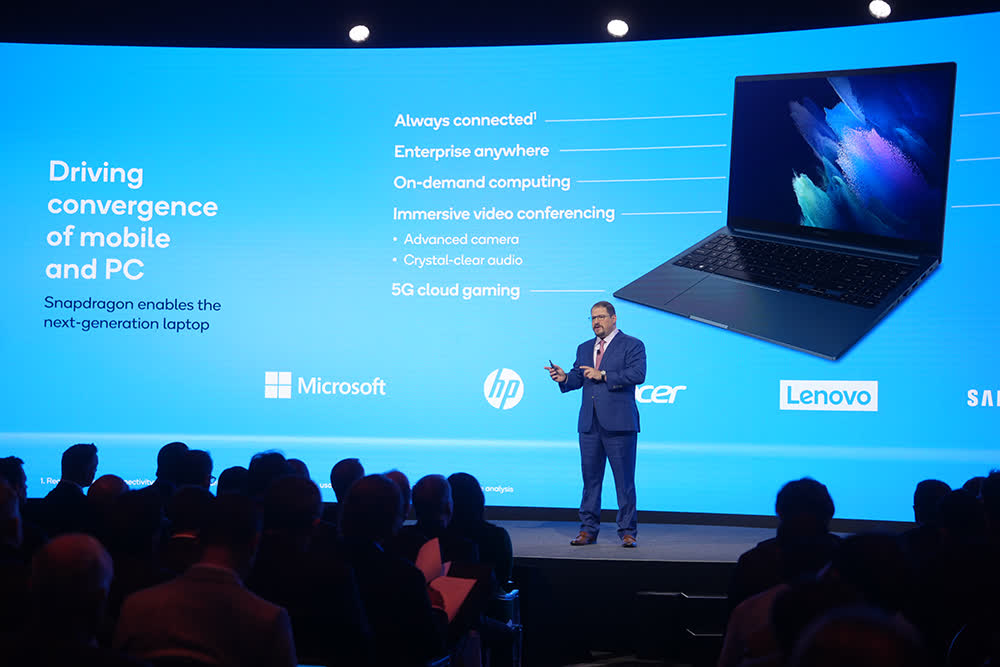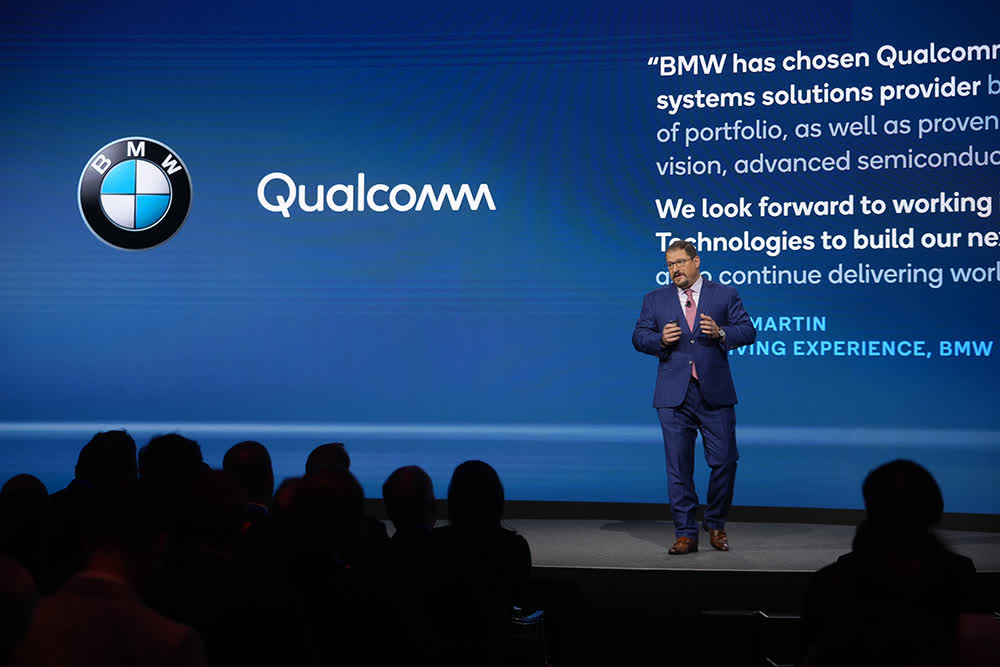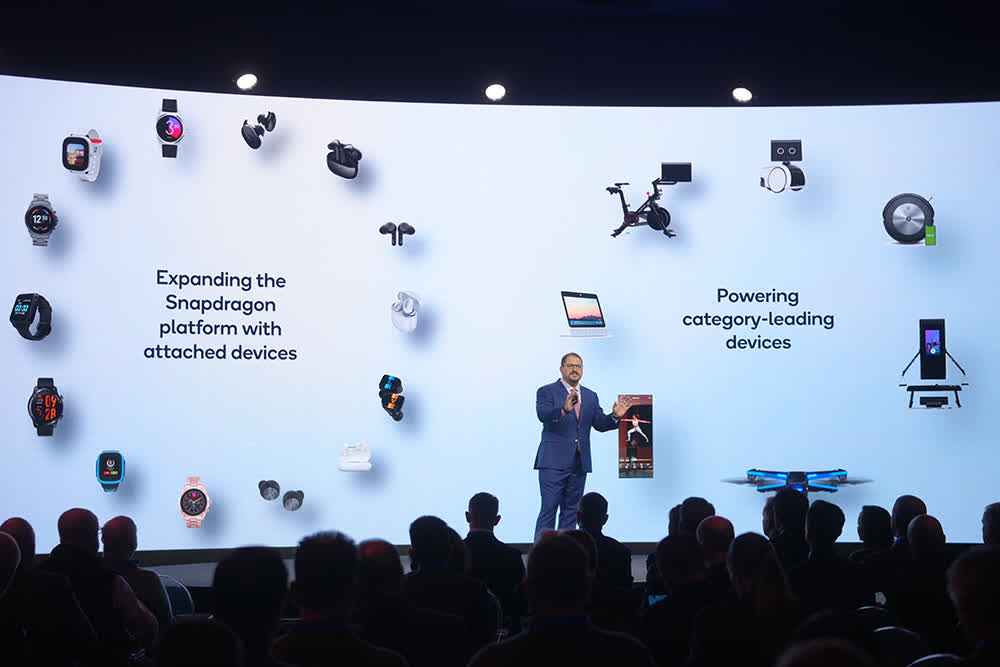Something to look forward to: Qualcomm has been on a roll over the past few years, particularly because of their role in developing 5G technology, although it hasn’t quite achieved the brand recognizability of companies like Intel, AMD or Nvidia. Most people still think of Qualcomm as a company that supplies specialized chips, like modems for smartphones, and while they do more than that, they have laid out a multi-year plan that puts a larger emphasis on car tech and even powerful PC hardware.

Qualcomm has been building components and software platforms that support multiple types of wireless standards (including Wi-Fi and Bluetooth), as well as things like wearables, earbuds, PCs, and AR or VR headsets, for some time now. Unfortunately, not that many people know or understand the extent of the company’s offerings.
In a direct effort to address that, newly appointed CEO Cristiano Amon and other Qualcomm leaders laid out a comprehensive new vision that ties all those elements and more together at the company’s recent Investor Day event.
Under the banner of empowering the connected intelligent edge, Amon and others highlighted the company’s growing efforts at diversifying beyond its heritage in mobile devices to include consumer and commercial IoT, network infrastructure, and more. They also laid out a series of numbers and new forecasts to back up their plan to shoot for a 7x increase in their addressable market over the next decade or so.

At the same time, Qualcomm announced an important new design win for its Snapdragon Ride platform with BMW, highlighting the company’s growing presence in the automotive market. Full details are still forthcoming, but essentially, future versions of at least some of BMW’s ADAS (Advanced Driver Assistance System) features in cars starting in 2024 will be powered by Qualcomm chips.
Building off of last week’s strong quarterly earnings, the news served to highlight the company’s recent advances as well as the important shift in priorities that Amon is making to the company’s direction. Having previously led the technology and products side of Qualcomm, it isn’t surprising to see him make these moves, but they do reflect a company that’s a bit less focused on its licensing business and more driven by new products and technologies.
The announcements also allowed the company to address the albatross that some feared hung around its neck—the potential loss of 5G modem revenue from Apple as the iPhone maker eventually shifts to a self-designed part. Qualcomm’s new financial models showed that loss to be of smaller concern than many first thought.
In addition, company leaders emphasized the increasing focus on these diversified markets could all be handled by the company’s single technology roadmap. In other words, they made it clear that their core technological capabilities in connectivity, compute, graphics, edge AI and camera can be used across multiple markets. One small example, they discussed how their advancements in smartphone photography can be used to provide better image sensor performance in connected cars.

Qualcomm discussed advancements it was making in several of its lesser known, but growing markets. In the area of RF Front Ends (RFFE), which are chips that sit between a cellular connected device’s antenna and modem, the company discussed how the advancements it made for smartphones can be leveraged into automotive, IoT, and other applications.
In the computing space, Qualcomm also gave a few more tidbits about its upcoming CPU design that’s made possible by its Nuvia acquisition. The company said it would be sampling the chip in 2022 and expected commercial products in 2023. Importantly, company leadership clarified that they are working on Nuvia-designed CPU cores for high-end smartphones and automotive applications in addition to the core market of PCs.
They also hinted that they expect to see performance levels in PCs that would rival Apple’s M-series chips. Qualcomm will have to prove that first, but the fact that it is willing to make the claim does provide some insight into the level of technical sophistication we should expect.
For long-time company observers, there wasn’t anything dramatically new about the picture that Qualcomm laid out at its Investor Day, yet the vision was much broader. The company has been in the automotive and PC markets for some time now, and it’s been enabling connected IoT devices for a long time as well. Similarly, it has been doing AI-based processing in its smartphone chips for many years.
What is new is that the world around the company has shifted so much that the concept of an intelligent connected edge now makes significantly more sense. This is yet another classic example of how the acceleration of existing technology adoption is creating important new opportunities for companies that have been smart enough to plan for it and wise enough to recognize that the time has come. Now we just need to see how they execute on this new vision.
Bob O’Donnell is the founder and chief analyst of TECHnalysis Research, LLC a technology consulting firm that provides strategic consulting and market research services to the technology industry and professional financial community. You can follow him on Twitter @bobodtech.
https://www.techspot.com/news/92261-qualcomm-sets-forth-ambitious-roadmap-includes-car-tech.html